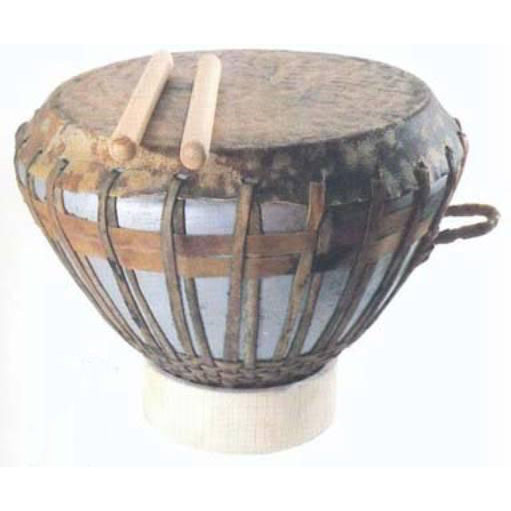dama overview
 Dama (pinyin: Dá mǎ), also known as Ga'a, is a Tibetan musical instrument. Popular in Tibet Lhasa, Shigatse, Qamdo, Qinghai Yushu, Sichuan Ganzi, Batang and other places in Tibetan court song and dance bands and Tibetan Buddhist monasteries.
Dama (pinyin: Dá mǎ), also known as Ga'a, is a Tibetan musical instrument. Popular in Tibet Lhasa, Shigatse, Qamdo, Qinghai Yushu, Sichuan Ganzi, Batang and other places in Tibetan court song and dance bands and Tibetan Buddhist monasteries.It has a long history and was first spread in Tibet. However, in the first half of the 9th century, during the reign of Lang Dama, Buddhism was destroyed, singing and dancing were forced to be banned, and Dharma was also lost for 800 years. It was not until the fifth Dalai Lama period (1642-1682) in the 17th century AD, when the local king of Ladakh came to make a pilgrimage to the Dalai Lama, that Dama reappeared in the court band. It was first used in the Galba Band of the Potala Palace in Lhasa City, and later spread to Tashilhunpo Monastery in Shigatse, Xiangbalin Monastery in Qamdo, Ganzi Monastery in Garze, Sichuan, and Changning Monastery in Batang.
The drum body is mostly made of brass, and some are made of aluminum alloy or wood. The appearance is similar to a jar with a small mouth and a big belly.
Before playing, in order to make the sound of the two drums distinct, the drum skins of Damache are often soaked in water to reduce the sound of the drums, while the drum skins of Damachong should be exposed to sunlight or baked by the fire to make the sound of the drums lower. Drums rise. Dharma is a non-fixed-pitch membrane-sounding instrument, but the pitches of the big and small drums are often in a fifth-degree relationship.
When playing, the player holds a chisel in each hand. Damache is placed on the right side of the player, Damachong is placed on the left side of the player, the two drums are connected and fixed together with belts or cloth belts, and one person should play a pair of drums at the same time. Dharma can be played either sitting or playing. It is mainly used for the accompaniment of court songs and dances by the Tibetan court Garba band, to welcome the Dalai Lama, to hold the summoning ceremony in Buddhist monasteries to welcome the Jampa Buddha and other rituals, as well as to accompany the Qiangmu and Tibetan opera. Generally, when singing and dancing are performed indoors or in gardens, the performers are often seated on the floor or on card mats and play according to the needs of the music. A 3 cm thick ring of cloth is placed under each drum. When the Dalai Lama holds a welcoming ceremony on a distant tour, he will play it outdoors, placing a pair of dharmas on both sides of the horse's back.
play. Dama's pronunciation is solid and powerful, the volume is loud, the tone is bright, and the transmission effect is good. The amount used varies from place to place. When performing Tibetan court songs and dances at the Potala Palace in Lhasa and the Tashilhunpo Monastery in Shigatse, four pairs of dama are used at the same time, while in other Tibetan Buddhist monasteries and Tibetan opera troupes, Then use one or two pairs of dama.
- Pinyin:Dá mǎ
- alias:Gaa
- popularly:Tibetan
reference materials and contributors
- 达玛 · 百度百科
overview of other similar instruments
- sanyanxiao overview
- Daguangxian overview
- Leiqin overview
- hahao overview
- yandundagu overview
- Han Xiaozheng overview
- Fang Xiang overview
- guanzi overview
- zhuqin (Dao Qin) overview
- zhuiqin overview
- bangzi overview
- three-stringed piano overview
- Gehu overview
- xiao overview
- xiaokonghou overview
- Konghou overview
- Sheng overview
- suona overview
- hulusi overview
- gushao overview
 渝公网安备 50010702504639号
渝公网安备 50010702504639号